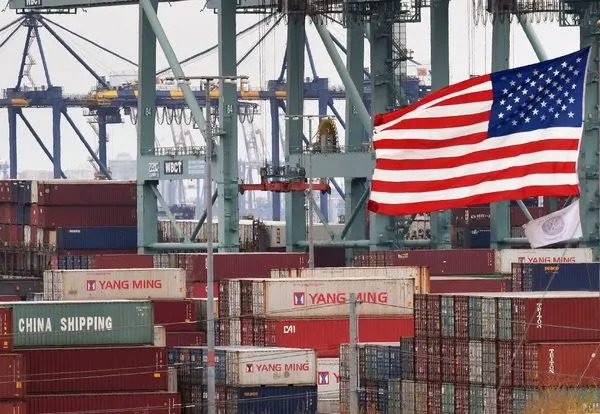🎧 Listen to This Article
A Global Transfer Pricing Reckoning Amid Tariff Turbulence
On April 2, 2025, the Trump administration detonated a new economic shockwave with a sweeping tariff regime: a 10% universal base tariff on global imports and a targeted 145% tariff on Chinese goods. While temporary relief was extended to some countries, China remains at the epicenter of a rapidly intensifying trade war—one that’s reverberating well beyond bilateral relations. For multinational corporations (MNCs), the real aftershock lies in transfer pricing (TP).
With China responding in kind—imposing 125% tariffs on US goods—MNCs with cross-border supply chains are under siege. Transfer pricing policies, traditionally designed to optimize tax outcomes, are now being wielded as survival tools. Yet, manipulating transfer prices to absorb tariff costs carries high stakes: regulatory scrutiny, double taxation, and financial distortions.
In this analysis, we unpack how MNCs can navigate the labyrinth of transfer pricing, customs valuation, and tax compliance under unprecedented tariff pressure.
Why Transfer Pricing is Now a Trade War Battlefield
At its core, tariffs are calculated on the transaction value of imports—which, for related-party transactions, is often the transfer price. This puts transfer pricing directly in the crosshairs of trade policy. Lowering transfer prices may reduce customs duties but simultaneously increase taxable income in the importer’s jurisdiction.
For example:
- A US-based MNC importing from its Chinese affiliate may reduce the transfer price to avoid the 145% tariff—saving millions.
- However, this simultaneously raises the importer’s profit margin, triggering higher income tax liabilities in the US.
This balancing act is further complicated by the mismatch between customs and tax authorities. Customs offices scrutinize declared transaction values for undervaluation, while tax authorities assess whether transfer prices align with the arm’s length principle.
Regulatory Minefield: Arm’s Length vs Economic Substance
Both the US and China apply the OECD-based arm’s length principle, but their interpretations diverge when it comes to real-world enforcement.
A key risk? Misalignment of substance and profit allocation. If tariff burdens are shifted to an exporter that lacks control over pricing or sourcing decisions, authorities may recharacterize the transaction. The result: adjustments, audits, and double taxation.
To mitigate this, MNCs must:
- Maintain rigorous functional analyses to justify risk allocations.
- Document economic rationales for any TP adjustments.
- Align transactional substance with actual control functions (i.e., pricing, procurement, distribution).
Comparability Breakdown: When Benchmarks Stop Working
Another unintended consequence of tariffs is the breakdown of reliable comparables. Companies impacted by tariffs may show depressed margins, skewing results. Meanwhile, unaffected peers may show stable or inflated profits.
This creates analytical challenges:
- Historic comparables lose relevance, invalidating years of documentation.
- Databases become thinner, making it harder to defend positions in audits.
- Authorities may challenge results as cherry-picked or misleading.
Solution: Enhance TP benchmarking models with adjustments for tariff impact, industry segmentation, or use of profit-split methods when functions are tightly integrated.
Double Trouble: Customs vs Tax Adjustments
Few events expose the schism between tax and customs authorities as clearly as tariff hikes.
- Customs focuses on the declared transaction value at importation.
- Tax authorities emphasize intercompany pricing justification over time.
Adjusting one side often triggers conflict on the other. Worse, customs authorities may refuse retroactive changes, and tax authorities may demand them. Without careful coordination, companies risk:
- Penalty exposure for inconsistent reporting.
- Delays in imports due to valuation disputes.
- Audit-triggering discrepancies between transfer pricing reports and customs declarations.
Strategic Recommendations for MNCs
In this volatile environment, multinational enterprises need a two-pronged response strategy:
Short-Term Measures
- Map tariff exposure across supply chains and simulate TP impact.
- Adjust intercompany pricing to reflect true economic control and decision-making.
- Strengthen contemporaneous documentation to defend both customs and tax positions.
- Reallocate tariff risk in contracts based on actual functional profiles of entities.
Medium to Long-Term Planning
- Re-evaluate global supply chain architecture to shift manufacturing or procurement away from high-tariff corridors.
- Reconsider risk-bearing entity designations and functional profiles.
- Build flexible intercompany agreements that account for potential duty and tax adjustments.
- Monitor evolving international frameworks (e.g., OECD Pillar Two, CBAM in the EU) that may interact with current tariff-driven structures.
Conclusion: A Tectonic Shift in Transfer Pricing Norms
The current tariff environment is more than a trade spat—it’s a fundamental challenge to how MNCs approach transfer pricing. What once was a back-office tax planning function is now front-and-center in boardroom risk management.
Failing to act may expose companies to cascading regulatory, financial, and reputational damage.
But those who proactively realign TP policies, manage dual compliance risks, and recalibrate their global operations may not just survive the tariff storm—they may emerge stronger, more agile, and more compliant in a fractured global economy.
For further details, clarification, contributions, or any concerns regarding this article, please contact us at editorial@tax.news. We value your feedback and are committed to providing accurate and timely information. Please note that our privacy policy will handle all inquiries



